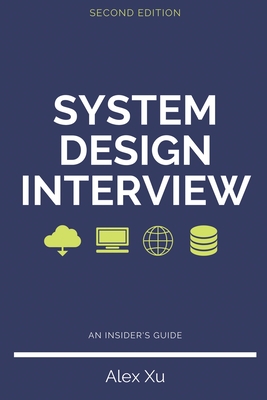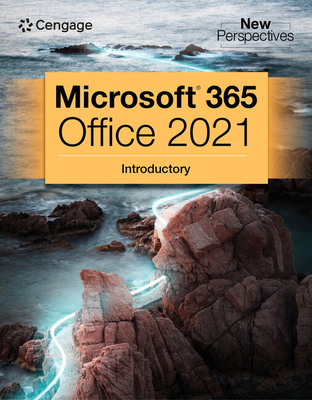5 Disruptive Technologies for the Enterprise: What are the Implications?
Disruptive technologies such as hand-held devices, cloud computing and social media are rattling the foundations upon which traditional businesses are built. Enterprise customers have grown smarter at ensuring the latest technological trends work in their favor. Everyone is trying to zero in on their core competencies by employing commodity services to run their business.
Likewise, enterprise application vendors need to zero in on their core competencies and enhance more value to the businesses of their clientele by leveraging standards-based commodity services, such as IaaS and PaaS, provided by leaders in those segments (e.g. Amazon EC2, Google Cloud Platform etc.).

What else enterprises need to do is learn to adopt new and emerging technologies such as cloud, utility and social computing to build on them to penetrate new market avenues.
New small and medium-sized entrants into the market are constantly challenging enterprises given their ability to rapidly turnaround and address the requirements of the customers in a cost-effective manner. Additionally, these new advancements also affect how enterprises create, deploy, and manage solutions and applications. If you take the example of Force.com, for instance, you find that it’s a common war zone for enterprise application vendors to furnish SME markets with their applications, with the new entrants mostly having an edge.
It’s like a battle of the fittest: to survive, sustain, and grow in this new age of disruptive technologies, enterprises must incessantly look for radical new ways to do things with a whole new thought process which is different from conventional methodologies and models. So much so that a day may soon come when they need to adapt to and embrace these so-called disruptive technologies as part of their strategy and vision.
Any disruptive technology or innovation in its own right provides a vast window of opportunities with regard to new businesses, new processes, and new markets, not to mention its own resources to prop its value chain. Moreover, these technologies also shake existing businesses and markets, as well as their existing value network over a period of time, overhauling an existing technology.
However, disruptive technologies are not devoid of their own implications – whether negative or positive – so let’s take a moment to go over a few of them, shall we?
The Internet of Things
The Internet of Things is a concept of everyday objects getting connected to the web. Sensors are being connected to everything you can think of: clothing, household items, machinery, you name it. And with the use of near-field communications and wireless technology to communicate with networks and the rest of the Internet, major implications on utilities, business process optimisation, remote healthcare, energy delivery, manufacturing and so on will be felt.
Energy and Capital gives some great examples into the Internet of things. For instance, assume you’re visiting the grocery store on your way from work. Not recalling what you’ve used up and need to restock in your refrigerator, you launch an app on your phone to do a quick check. The app then connects to the fridge which is already embedded with sensors, and it will bring you a list of what you need to buy based on the products left in the fridge and those that are set to expire soon. Even more conveniently, it gives you very specific information such as how many eggs you have left.
The Internet of Things could also be applied in areas that include, but not limited to: waste management, intelligent retail, emergency response, vehicle-to-vehicle communication, just to name but a few.
Cloud
Cloud technology can offer centralised computing resources to serve multiple users – be it through internally in an organisation or through a third-party service.
More pressure will be heaped on the computer and IT industries through efficient use of resources as more work gets done by fewer people and machines. According to a Gartner symposium/IT expo hosted in late 2013, enterprises are being advised to design private cloud services putting their hybrid future in mind as well as ensuring their future integration/interoperability can be achieved.
3D Printing
3D printing is quickly gaining fame, be it for high-profile use or research that could allow devices to make meals literally.
Printers can transform the manner in which enterprises make almost anything through distributed manufacturing, giving consumers the freedom to make products themselves, or even in the development of tissues and organs for use in transplants.
Mobile Internet
Today, mobile Internet has grown than just the simple act of using a smartphone or tablet to access the web. According to the McKinsey Global Institute, mobile Internet will affect aspects like worker productivity, service delivery, consumer habits and preferences when shopping and so on.
Consequently, it will have a significant impact on technologies such as new user interface designs, advanced displays, battery technology, and wireless among others.
Smart Machines
Gartner goes on to forecast that by 2020, the era of the smart machine will witness a rise in smart advisors like the IBM Watson, intelligent personal assistants that are contextually aware, cutting-edge global industrial systems etc. In fact, the smart machine era is pitted to be the most disruptive since the advent of IT.
Individuals and enterprises alike will invest in, control and employ their smart machines with a goal of becoming more successful.
Last Word
It is worth noting that as much as the above technologies pose great potential for improving the success of the enterprise and the world at large, they’re also accompanied by their list of unwanted side effects.
Cloud computing and mobile Internet, for instance, could bring about privacy and security breaches which could be disastrous for business. Not only that, the Internet of Things could also be hacked putting entire factories, transportation networks, refineries, power plants and supply chains at a standstill.
For enterprises in particular, the key factor for survival in these fast times is to evaluate consumer behavior endlessly when technologies and society are evolving faster than an organization’s ability to adapt and serve its consumers. Businesses should shift their gaze way beyond persisting the latest disruptive technology and instead focus on investing in the future requirements of the ever changing consumer.
Organizations should abstain from taking sudden leaps and instead progress in short but sure steps. However, enterprises face extinction with their consumers and markets becoming unreachable, unless they start adapting and leveraging the changing trends.
Related:
What Does It Mean To Be an IT Consultant, Really?
How to get an edge in the Realm of Software Development
Top 10 Programming Languages Expected To Be In Demand in 2014
What Are New Career Choices in Information Technology In The Last 10 Years?
other blog entries
Course Directory [training on all levels]
- .NET Classes
- Agile/Scrum Classes
- AI Classes
- Ajax Classes
- Android and iPhone Programming Classes
- Blaze Advisor Classes
- C Programming Classes
- C# Programming Classes
- C++ Programming Classes
- Cisco Classes
- Cloud Classes
- CompTIA Classes
- Crystal Reports Classes
- Design Patterns Classes
- DevOps Classes
- Foundations of Web Design & Web Authoring Classes
- Git, Jira, Wicket, Gradle, Tableau Classes
- IBM Classes
- Java Programming Classes
- JBoss Administration Classes
- JUnit, TDD, CPTC, Web Penetration Classes
- Linux Unix Classes
- Machine Learning Classes
- Microsoft Classes
- Microsoft Development Classes
- Microsoft SQL Server Classes
- Microsoft Team Foundation Server Classes
- Microsoft Windows Server Classes
- Oracle, MySQL, Cassandra, Hadoop Database Classes
- Perl Programming Classes
- Python Programming Classes
- Ruby Programming Classes
- Security Classes
- SharePoint Classes
- SOA Classes
- Tcl, Awk, Bash, Shell Classes
- UML Classes
- VMWare Classes
- Web Development Classes
- Web Services Classes
- Weblogic Administration Classes
- XML Classes
- LINUX SHELL SCRIPTING
30 June, 2025 - 1 July, 2025 - RED HAT ENTERPRISE LINUX SYSTEMS ADMIN I
19 May, 2025 - 23 May, 2025 - Object Oriented Analysis and Design Using UML
9 June, 2025 - 13 June, 2025 - Python for Scientists
28 April, 2025 - 2 May, 2025 - RHCSA EXAM PREP
16 June, 2025 - 20 June, 2025 - See our complete public course listing
did you know? HSG is one of the foremost training companies in the United States
Our courses focus on two areas: the most current and critical object-oriented and component based tools, technologies and languages; and the fundamentals of effective development methodology. Our programs are designed to deliver technology essentials while improving development staff productivity.
An experienced trainer and faculty member will identify the client's individual training requirements, then adapt and tailor the course appropriately. Our custom training solutions reduce time, risk and cost while keeping development teams motivated. The Hartmann Software Group's faculty consists of veteran software engineers, some of whom currently teach at several Colorado Universities. Our faculty's wealth of knowledge combined with their continued real world consulting experience enables us to produce more effective training programs to ensure our clients receive the highest quality and most relevant instruction available. Instruction is available at client locations or at various training facilities located in the metropolitan Denver area.
Upcoming Classes
- LINUX SHELL SCRIPTING
30 June, 2025 - 1 July, 2025 - RED HAT ENTERPRISE LINUX SYSTEMS ADMIN I
19 May, 2025 - 23 May, 2025 - Object Oriented Analysis and Design Using UML
9 June, 2025 - 13 June, 2025 - Python for Scientists
28 April, 2025 - 2 May, 2025 - RHCSA EXAM PREP
16 June, 2025 - 20 June, 2025 - See our complete public course listing
consulting services we do what we know ... write software
The coaching program integrates our course instruction with hands on software development practices. By employing XP (Extreme Programming) techniques, we teach students as follows:
Configure and integrate the needed development tools
MOntitor each students progress and offer feedback, perspective and alternatives when needed.
Establish an Action plan to yield a set of deliverables in order to guarantee productive learning.
Establish an Commit to a deliverable time line.
Hold each student accountable to a standard that is comparable to that of an engineer/project manager with at least one year's experience in the field.
These coaching cycles typically last 2-4 weeks in duration.
Business Rule isolation and integration for large scale systems using Blaze Advisor
Develop Java, .NET, Perl, Python, TCL and C++ related technologies for Web, Telephony, Transactional i.e. financial and a variety of other considerations.
Windows and Unix/Linux System Administration.
Application Server Administration, in particular, Weblogic, Oracle and JBoss.
Desperate application communication by way of Web Services (SOAP & Restful), RMI, EJBs, Sockets, HTTP, FTP and a number of other protocols.
Graphics Rich application development work i.e. fat clients and/or Web Clients to include graphic design
Performance improvement through code rewrites, code interpreter enhancements, inline and native code compilations and system alterations.
Mentoring of IT and Business Teams for quick and guaranteed expertise transfer.
Architect both small and large software development systems to include: Data Dictionaries, UML Diagrams, Software & Systems Selections and more














